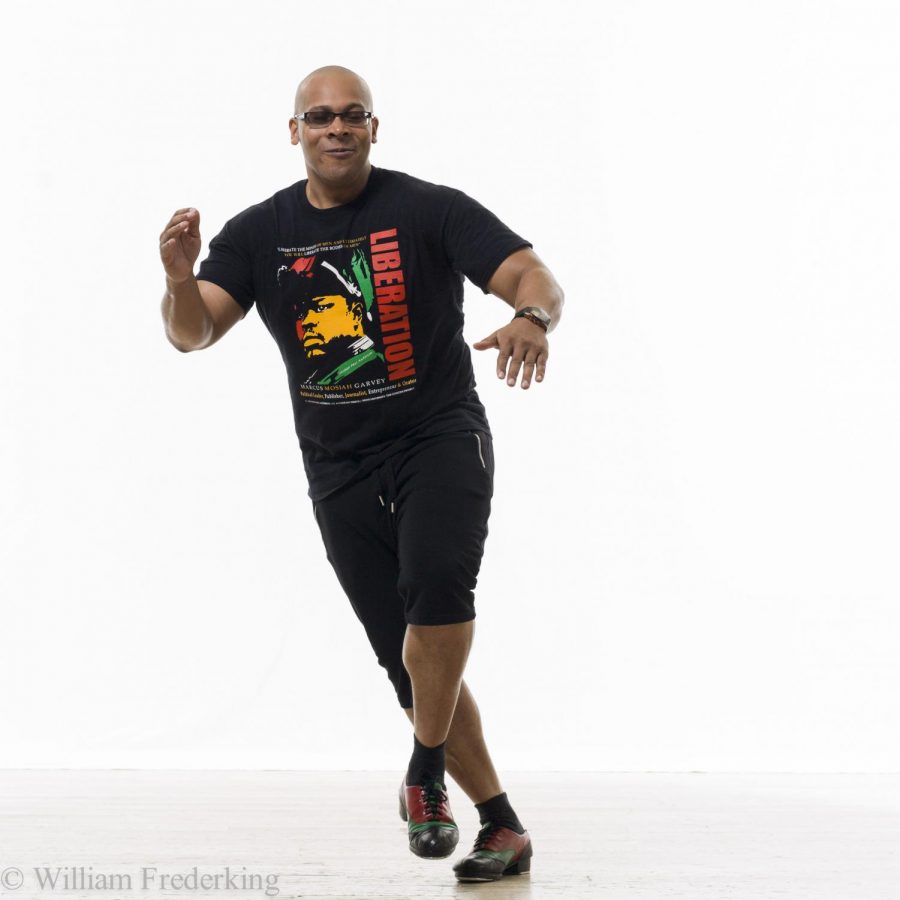Notable Native: Bril Barrett
M.A.D.D Rhythms aims to preserve, promote and contribute to the tap dance art form.
May 8, 2017
Bril Barrett has been tap dancing since childhood and is now dedicated to preserving the art and shaping the lives of Chicago teens through dance. The founder and artistic director of the Bronzeville-based dance company M.A.D.D, Making a Difference Dancing, Rhythms said he strives to make a difference in the underserved communities of Chicago with just his feet.
The Chronicle spoke with Barrett about his work and the avenue of opportunity that tap dancing provides teens.
THE CHRONICLE: When did you start tap dancing?
BRIL BARRETT: My grandmother always wanted to be in entertainment, so when she had children, she tried to get all of them into dance and acting, but none of them stuck with it. So, she got her grandchildren involved.
When I first started, I immediately had a love for it, so my mom put forth a lot of effort to keep me involved, learning and dancing.
Like most kids, I started off taking everything but as soon as I picked tap, I knew it was different. I felt a connection and immediately loved it. I’ve known since I first put on a pair of tap shoes that I wanted to tap dance for the rest of my life.
As I got older, I started to realize I could express myself with tap dance, and that’s what knocked it out of the ballpark for me. I began to use tap dance to connect to everything in my life.
How and when did you decide to use tap dance in an impactful way?
As I started to go into my teens, I wanted to be a famous tap dancer. It was all about fame and fortune. But I had a little brother and sister, and because my mom was a single mom and she worked long hours, a lot of times I would have them with me, so they went to dance classes with me.
I started teaching tap when I was still in high school, so they were always with me. But my mom would tell me my little brother was falling in with the wrong crowd, and I realized I needed to create something that could keep my little brother close to me. So I was teaching an all-boys class, and I wanted to start sharing the things that I figured out and learned along the way as a black man in America. I wanted to share, teach and mentor. I let them learn how to express themselves, communicate and tell stories. I wanted to be able to expose young black men in this country who have come from neighborhoods just like I did that with this skill set I got from tap dance, I’ve been able to transcend my neighborhood and city and travel, and I wanted that to be an option for all kids.
What is the mission of M.A.D.D. Rhythms?
The premise for M.A.D.D. Rhythms was we have to be able to expose people to this art form. To be able to teach and pass on to young people in communities where there are not a lot of options. No matter how big or how popular or how much money we make, we will always have programs in the community, teaching and exposing young people to tap dance.
What kind of programs do you have for young Chicagoans?
Once we got established, we were very lucky to create a program with After School Matters, and it was very important for me to have that program on the West Side in the community I came from. Having the ability for the teens to have an after school job but be learning to tap dance as their job, it was a no-brainer. It was the perfect opportunity to help young people financially in their homes with a stipend at the end of the program—a job-training program.
Over the course of a year, we hire upwards of 90 teens, and they learn how to tap. Not only do they learn, but they get out into the communities they are familiar and unfamiliar with. This enables them to learn how to communicate with people better and build their self-confidence. To be open to the world because now they’re starting to experience difficult cultures. They learn how to punch a clock, how to be on time, accountable, responsible—these are all skill sets that follow them after they leave the program. It doesn’t bother me that a lot of the teens may not tap dance again, as long as they become better people, communicators and better identifiers of opportunities for success for themselves.
What progress do you see teens making through the tap dance programs?
For our program, they have to maintain a C average in school. Tap dance is a very audio-visual art form, so it strengthens the mental capacity of all kids. Also, learning the history of tap and the struggles the African-American inventors had to go through makes them aware of how to overcome adversity and find the silver lining in a situation.
How do you hope to shape the future of tap dance and Chicago youth?
It’s all the same goal. When I was growing up, the generation of tap above me, I could count on one hand. African-American tap dancers in that generation, I can count on two fingers. There’s no way more people should not be dancing and more young people of color should not be dancing especially in this African-American art form.








